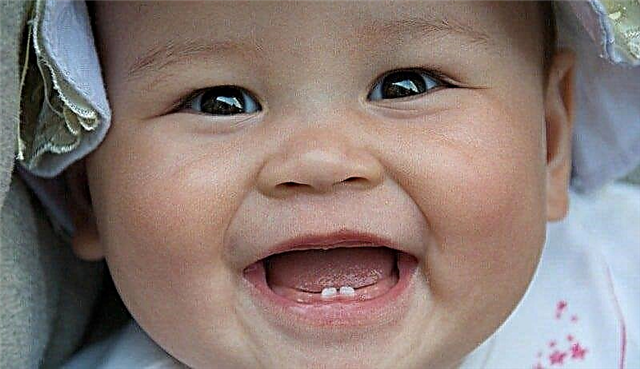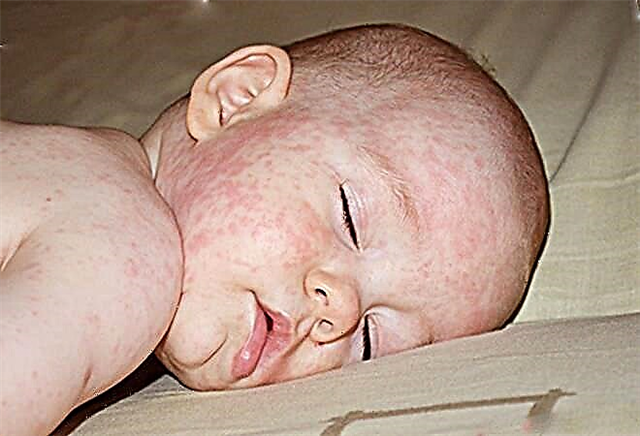All genetic information about a person is contained in the DNA molecule (deoxyribonucleic acid). The hereditary material laid down in it determines the appearance of the child, his mental abilities, temperament, as well as a predisposition to certain diseases. The fact that scientists were able to study and decipher DNA marks one of the most important and significant advances in the field of medicine. It was thanks to this that it became possible to carry out screening from the heel of a newborn, which, in turn, made it possible to identify dangerous hereditary diseases in the early stages and prevent their further development in time.

Newborn heel screening
Analysis from the heel in newborns for what they take, what is this procedure, how is it carried out, what pathologies can it reveal?
Analysis from the baby's heel
Almost every newborn in the first days of life undergoes this procedure, while still within the walls of the hospital. Analysis from the heel is taken without fail. There are certain rules and terms for conducting research. Also, everyone can familiarize themselves with the list of diseases that can be prevented by screening.
What is meant by screening
The official medical name for genetic testing in newborns is neonatal newborn screening. It can also be called the heel test. This procedure was approved by the order of the Ministry of Health and Social Development of the Russian Federation of March 22, 2006 N 185 "On the mass examination of newborn children for hereditary diseases." According to this document, every newborn child in Russia is examined for the most common genetic diseases. Since each of them poses a serious threat to the life and health of the baby, early detection of the disease is necessary, which allows you to start treatment in a timely manner and more easily cope with the pathology.
The problem is that this type of disease cannot be diagnosed during gestation. That is why it is very important to do all the necessary research as early as possible, that is, almost as soon as the baby was born. For the treatment to be successful, the analysis must be carried out before the manifestation of clinical signs of pathology. If the symptoms of the disease make themselves felt, the child's chance of recovery is significantly reduced.
The neonatal screening procedure is based on a blood test taken from the baby's heel.
What diseases does it reveal
The list of hereditary pathologies and abnormalities, which screening of a newborn is aimed at identifying, includes the five most severe and common diseases of this type.
Interesting. The danger of genetic diseases is that it is very difficult to predict their development in a child - this can happen in any generation. Thus, even if the parents and closest relatives of the baby did not suffer from hereditary pathologies, the disease can still be transmitted to the child if his distant ancestors were carriers of the same disease. For this reason, the test is done for all children in the hospital, regardless of the presence or absence of severe genetic abnormalities in the family members of a particular child.

Manifestations of cystic fibrosis
So, what is blood taken from the heel of a newborn? In all cases, the procedure is aimed at detecting five dangerous hereditary diseases, which include:
- Phenylketonuria. The incidence of this pathology in Russian children is one case per 10 thousand infants. The essence of the disease lies in the fact that the baby does not produce an enzyme that can break down phenylalanine (amino acid). This substance is found in most protein products. As a result, the amino acid accumulates in the child's body and begins to have a toxic effect on the central nervous system, primarily on the baby's brain. In the absence of treatment, the disease in all cases is guaranteed to lead to mental retardation of the child. Early drug therapy and a strict diet will ensure the normal development of the baby, but the patient will remain a carrier of the pathology for life.
- Congenital hypothyroidism. Negative symptoms occur due to insufficient production of certain hormones. If you do not take action as early as possible, the crumbs have a delay in mental and physical development. As a result, the baby suffers from serious defects and deviations. If the diagnosis was made before the symptoms of the disease appeared, the doctor prescribes a course of hormonal therapy for the baby. Thanks to this, the development of pathology is completely excluded. The incidence of the disease in Russia is one newborn in 5 thousand.
- Galactosemia. This ailment occurs in about one infant in 20 thousand children. The cause of the disease lies in the mutation of a gene that is responsible for converting galactose contained in milk into glucose. As a result, there is a serious violation of metabolic processes in the body. Since galactose is not assimilated, it accumulates. At a certain point, the substance begins to negatively affect the infant's central nervous system. In addition to the nervous system, the child's liver and vision are also toxic. In the absence of adequate and timely treatment, the crumbs have chronic liver damage, blindness, and mental retardation. In theory, the disease can lead to the death of the child. Proper treatment and a special diet, which completely excludes milk and dairy products from the diet of the baby, ensure the baby's full growth and development.
On a note. The nature and mechanism of this pathology, as well as the treatment process, have some similarities with phenylketonuria.
- Adrenogenital syndrome. The disease occurs in one child in 5.5 thousand newborns. The essence of the pathology lies in the fact that the production of hormones by the adrenal cortex is disrupted. As a result, the body builds up an excess of certain hormones. As a result, salt metabolism in the child's body is disrupted, the development of the genital organs is incorrect (in girls, the reproductive system is formed "according to the male type"), there is a delay and even a cessation of growth (usually after 12 years). In order to prevent negative manifestations of adrenogenital syndrome, children are prescribed a course of taking hormonal drugs.
- Cystic fibrosis. In another way, this disease is called cystic fibrosis. It is a very severe hereditary pathology that leads to disruption of the respiratory and digestive organs. The reason for the deviations is gene mutations. With timely treatment, the manifestations of the disease can be significantly reduced.
When is heel screening done?
If the baby is born full-term, the test is done on the fourth day after birth. Babies born prematurely are examined on the seventh day.
It makes no sense to take an analysis earlier than the fourth day, since at this time there is a great risk of getting an erroneous result. The error can consist both in the detection of a non-existent disease, and vice versa (that is, in not detecting an existing one).
As for premature babies, the test no earlier than on the seventh day is explained by the need to normalize the baby's condition.
On a note. If a mother with a child was discharged from the hospital before the examination was carried out, she is given a special document that gives her the right to take a test at any local hospital.

Analysis
How the analysis is done
The essence of the examination is to take a small amount of blood from the baby's heel, apply a couple of drops to a special filter blank, further study the material and draw up a conclusion. The procedure itself takes no more than two minutes and does not pose a danger to the child, with the exception of minor discomfort. Only 2-3 drops of a newborn's blood can once and for all reassure the doctors and parents of the baby about his health.
On a note. During the analysis, a dry blood spot is examined. This method of medical research has an official name - the method of tandem mass spectrometry.
Why exactly from the heel
Taking an analysis from the heel in newborns looks rather unusual - it is much more familiar to take a standard blood sample from a finger or a vein, as is done by adults. Why is blood taken from the heel of a newborn? The reason is very simple - the baby's fingers are still too small for such manipulations.
Description of the procedure
To ensure the reliability of the research results, it is necessary to prepare the baby for the procedure and in the future follow a number of certain rules:
- Usually, the test is done to babies who ate breast milk in the first days after birth.
- The procedure can be carried out at least three hours after a meal.
- Immediately before blood sampling, the child's leg is disinfected: washed with soap and treated with alcohol, then wiped dry.
- Next, the procedure itself takes place, which is as follows: the health worker slightly squeezes the heel and pierces the skin on it with a sterile needle (the puncture depth is no more than 2 mm). The first drops of blood are removed with a clean napkin, the next few should be within the circles drawn on a special form. In this case, it is important that these areas are completely saturated with the collected material. Otherwise, there will not be enough blood for the analysis. There are 5 such places on the test form in total (each circle will be checked for one of the possible hereditary diseases). At the end of the procedure, you need to wait for the paper to dry (it takes about 2-3 hours in time). Further, on the back of the form, the necessary information about the newborn, his parents and contact information are entered in the appropriate columns. Then the document must be sealed and handed over to the laboratory for research by geneticists.
Interpreting Analysis Results
Material processing takes approximately 1.5-2 weeks. Parents are only notified of the results if the child is found to be abnormal. If the test is negative, information is not reported.
If the result is positive, then the parents should immediately contact the appropriate specialist. If the diagnosis is confirmed, urgent treatment is required. In some cases, the development of pathology can be completely excluded, in others (if the disease is incurable) - to prevent deterioration and complications.
Important! If the test result is positive, a second study is mandatory. Only if the second time the result has confirmed the presence of the disease, the child is prescribed adequate therapy.
The interpretation of the test results should be carried out by a qualified technician based on additional analyzes. By themselves, the results of the study are not a specific diagnosis.

Screening test blank
Can the results be trusted
In rare cases, the result may turn out to be false-positive or false-negative, which is often associated with a violation of the rules for taking material. That is why, when receiving a positive test, it is necessary to undergo a second examination.
Is it possible to refuse screening
The procedure is not compulsory, so parents, if they wish, can refuse to carry it out. However, it is undesirable to do this, because blood sampling is carried out almost painlessly for the child (the baby experiences only short-term discomfort), and the importance of the event can hardly be overestimated. In no case can one refuse to re-examine.
Heel screening in newborns is the most important method of medical research, which allows early detection of the presence or absence of serious genetic diseases in infants. To understand how important this analysis is, you need to know how much, why and for what blood is taken from the heel of newborns. In this case, parents are unlikely to neglect this study.



